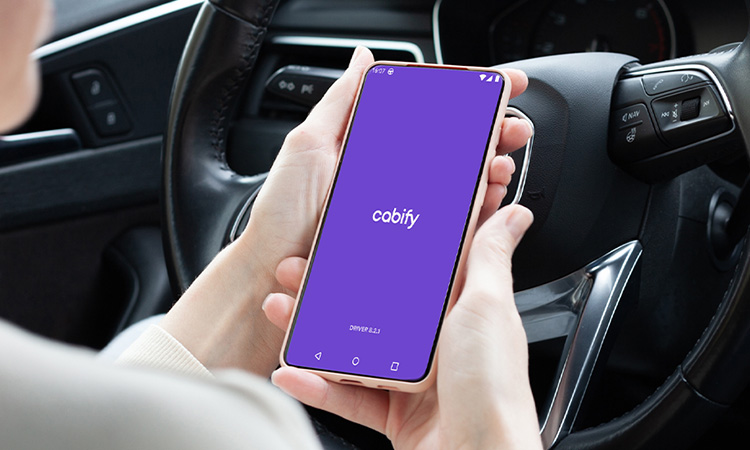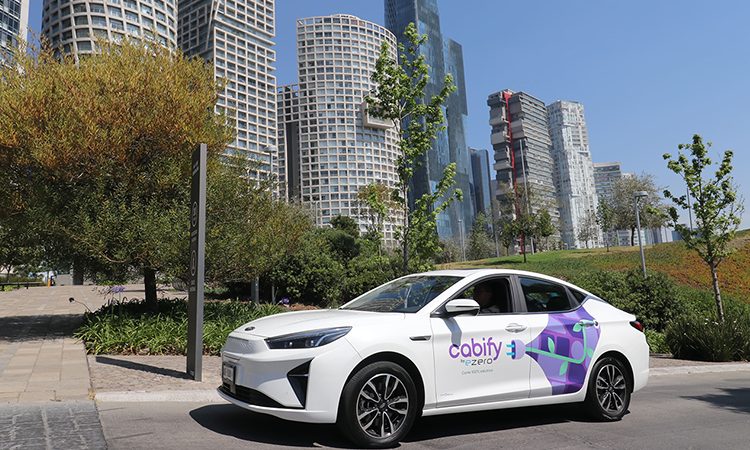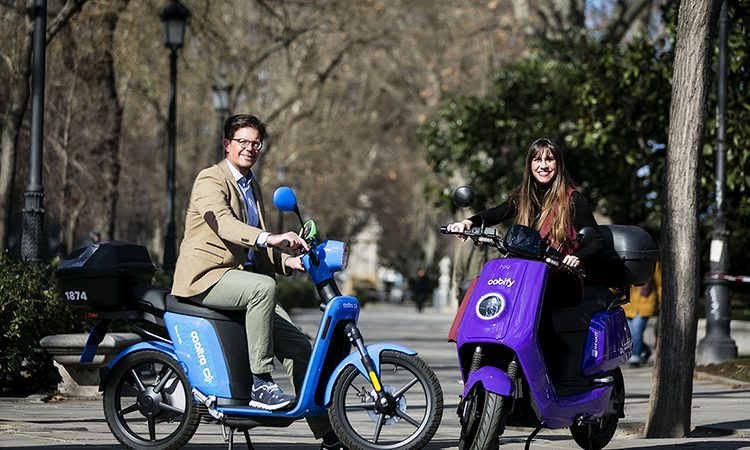Enhancing urban accessibility: Cabify’s technological approach
- Like
- Digg
- Del
- Tumblr
- VKontakte
- Buffer
- Love This
- Odnoklassniki
- Meneame
- Blogger
- Amazon
- Yahoo Mail
- Gmail
- AOL
- Newsvine
- HackerNews
- Evernote
- MySpace
- Mail.ru
- Viadeo
- Line
- Comments
- Yummly
- SMS
- Viber
- Telegram
- Subscribe
- Skype
- Facebook Messenger
- Kakao
- LiveJournal
- Yammer
- Edgar
- Fintel
- Mix
- Instapaper
- Copy Link
Posted: 25 July 2023 | Carlos Herrera Yagüe - Cabify | No comments yet
Carlos Herrera Yagüe, Chief Technology Officer at Cabify, sat down with Intelligent Transport’s Halimah Haque to discuss the transformative role of technology in enhancing accessibility in cities, as well as how Cabify’s commitment to inclusivity and implementing a user-centric design is enabling the company to actively revolutionise the landscape of urban mobility.


Credit: Cabify
Can you tell us about how Cabify utilises technology to enhance accessibility in urban areas?
First of all, we have a broad view on accessibility. Accessibility needs affect all of us, because often we find ourselves accompanied by children, which necessitates considering their specific requirements. On the other side, there are also people who have very specific accessibility needs, such as blind people. So, when launching a service or designing an app, we focus on the accessibility of the new feature, app or service.
I want to emphasise that our focus on accessibility extends beyond the digital experience and also the offline experience that is part of the service”
In addition, I want to emphasise that our focus on accessibility extends beyond the digital experience and also the offline experience that is part of the service. For example, it doesn’t make sense that I put a lot of effort into having my app be really useful for voiceover and other technologies for blind people, if then the driver doesn’t know how to correctly serve a blind person, or even doesn’t allow the dog in the vehicle. So, basically, we do both. We do the digital, and we do the training for the drivers, so that they can better serve people with additional needs.
What role does technology play in addressing the unique challenges faced by Cabify in Latin American cities regarding accessibility?
We believe that cities have been designed for cars way too much, which is why we aim to facilitate a transition that focuses more on the needs of people”
We believe that cities have been designed for cars way too much, which is why we aim to facilitate a transition that focuses more on the needs of people. To achieve this, we have developed Cabify as a digital platform that operates at the level of data. Cabify acts as a virtual layer that assists people in moving around the city. So, the goal is for every user to be able to find the mode of transport that they need, in line with their needs, through the Cabify app. Moreover, all of the information provided by the app is constantly updated in real-time, ensuring that users receive accurate details about the proximity of available cars and mopeds. This kind of information can significantly contribute to helping people to move about.


Credit: Cabify
How does Cabify leverage data science to analyse and optimise its operations, ultimately contributing to making cities more accessible?
We aim to eliminate instances of empty cars and motorbikes, as they only waste space without serving a purpose”
We want to maximise the value brought by every asset that we deploy in the city when it comes to mobility. Whether it’s a car, moped or car-sharing, we want these assets to be with a passenger as much as possible, as that is when they add value to the city. We aim to eliminate instances of empty cars and motorbikes, as they only waste space without serving a purpose. In that sense, our data science team helps us to gather real-time data, so that we can feed into the system and help our user to make better mobility decisions. Here, I refer to the user in a broad sense, because we have an interesting recommendation system designed for drivers. When drivers find themselves without passengers, our system sends them personalised suggestions on where they can go, helping to increase their occupancy rate.
How does Cabify collaborate with other stakeholders, such as authorities or public transportation systems, to further its goal of improving urban accessibility using technology?
We are open to collaboration, because we recognise that the data, information and real-time nature of our operations is relevant to others”
We are open to collaboration, because we recognise that the data, information and real-time nature of our operations is relevant to others. Therefore, we actively engage in open conversations with several institutions around the world in order to make this happen. In addition, we are also trying to help mapping companies to improve their products. By enhancing mapping services, people are more likely to get away from their private vehicle, as they will find other options to be viable, as well.
While we primarily focus on improving our own app, we are also open to sharing insights and data with others. Although no concrete agreements have been reached yet due to ongoing discussions, we have established certain principles. For example, the data from Cabify can only be used to fulfil Cabify’s purpose of improving cities. That’s a red line. We firmly believe that, when a city is thinking of, for example, changing the zoning of a certain area of the city, we have data that can help them to make these important decisions.
In what ways does Cabify employ technology to enhance the overall user experience and accessibility for passengers with specific mobility needs or disabilities?
It’s important to emphasise that accessibility in some parts of the world, particularly in Latin America, also means access to safe transportation”
We care a lot about ensuring that the digital experience that we deliver is accessible to the highest standards. As part of this commitment, we release a new version of our app every week, incorporating automotive testing alongside accessibility testing. In fact, we are pioneers in this field, and our work has caught the attention of industry giants like Apple and Google, who have said that we are the first in the world to systematically prioritise accessibility.
So, that’s one portion of the work that we do to ensure accessibility. The other portion is regarding our services. We care about offering inclusive services. For instance, in many cities where we operate, we are proud to be the only app that is providing a kids product; specifically, cars equipped with child seats. This offering positions us as a viable alternative for families, not just for individuals.
Finally, it’s important to emphasise that accessibility in some parts of the world, particularly in Latin America, also means access to safe transportation. There are areas within cities where people do not feel safe to move around, leading to isolation from the rest of the city. So, in that regard, we strive to make those areas more accessible instead of isolated by offering a reliable and safe transportation service.


Credit: Cabify
With advancements in emerging technologies like electric and autonomous vehicles, how does Cabify plan to incorporate these technologies specifically to enhance accessibility and sustainability in cities?
We have committed to this vision by pledging that all of our connected vehicles in Spain will be electric by 2025″
We strongly believe that the future of urban mobility lies in electric vehicles. We have committed to this vision by pledging that all of our connected vehicles in Spain will be electric by 2025, and we aim to achieve the same goal in Latin America by 2030. We also closely monitor emerging technologies, such as autonomous vehicles. In particular, we are excited about the potential of generative artificial intelligence (AI), which could enable us to enhance various aspects of our services. For example, for users that might not be as comfortable using an app, it could facilitate alternative methods of ordering rides, such as through chat interfaces. This new technology could provide us with the ability to scale such solutions effectively. So, that’s something that we want to explore. And, of course, in the event of any issues or the need for customer support, we believe that we can significantly improve the support experience for our users.
At the end of the day, we are adding a customer support layer to mobility services, an aspect that has traditionally been lacking. By offering deep integration and meaningful interactions with our customers, we aim to provide them with an enhanced experience. We recognise that a ride does not solely end when a passenger reaches their destination; it also involves follow-up, improvements and solutions to any issues that may arise.
Looking to the future, what technological advancements or trends do you foresee as having the greatest potential to transform urban mobility and accessibility, beyond electric and autonomous vehicles, and how is Cabify positioned to embrace and integrate these innovations in its long-term strategy?
As I’ve mentioned, one notable technology is generative AI, as it can allow us to make our user interface more human-like, aiming to create a more engaging experience. In addition, we see potential in remote driving as a solution to urban challenges. Imagine if our drivers could work from home, it may help to make their job more attractive and offers them greater flexibility. This is something that’s often not highlighted, but we have seen interesting development in that space. We are excited about the progress made so far and eagerly anticipate further advancements in the future.


Related topics
Accessibility, Artificial Intelligence, Passenger Experience, Sustainable Urban Transport
Related modes
Autonomous vehicles, E-mopeds, Ride-sharing & Car-sharing
Related countries
Spain
Related organisations
Cabify
Related people
Carlos Herrera Yagüe








